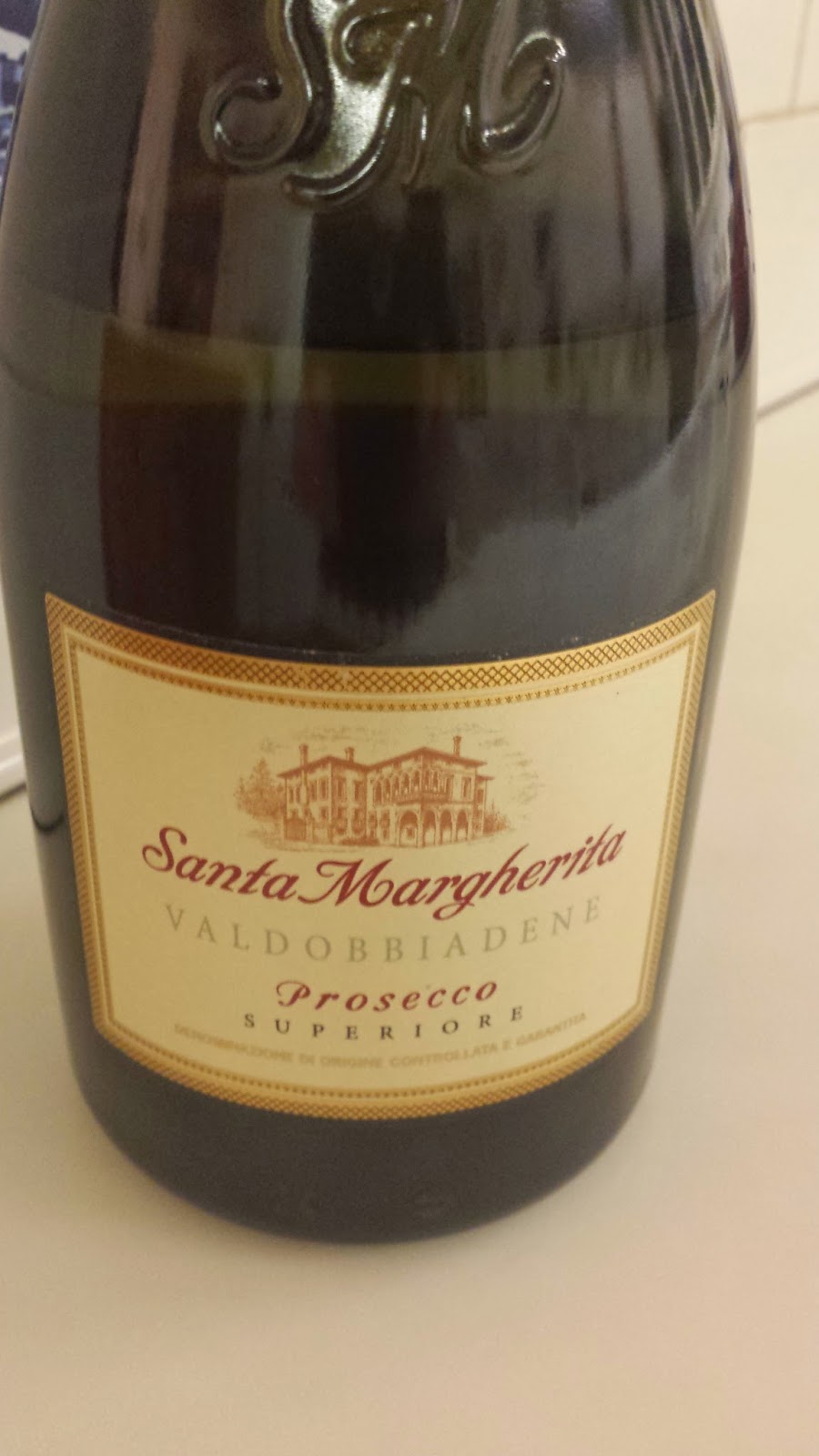 Looking for a little bubbly to lighten up the winter blues? The Santa Margherita Prosecco is just the ticket! With it's pale honey colored hue it lures you in. This Prosecco exhibits some perlage- enough to satisfy craving for a little bubbly without being too intense. The nose of this wine boasts a sweet apricot and honeysuckle aroma. The taste is slightly acidic with notes of green apple and tangerine. This Prosecco pairs nicely with Camembert or goat cheese. Leave your heavy Merlots and Cabernet's in the closet tonight. This wine is sure to tickle your fancy....and your taste buds.
Looking for a little bubbly to lighten up the winter blues? The Santa Margherita Prosecco is just the ticket! With it's pale honey colored hue it lures you in. This Prosecco exhibits some perlage- enough to satisfy craving for a little bubbly without being too intense. The nose of this wine boasts a sweet apricot and honeysuckle aroma. The taste is slightly acidic with notes of green apple and tangerine. This Prosecco pairs nicely with Camembert or goat cheese. Leave your heavy Merlots and Cabernet's in the closet tonight. This wine is sure to tickle your fancy....and your taste buds.
Saturday, January 24, 2015
Santa Margherita Brut Valdobbiadene Prosecco Superiore
 Looking for a little bubbly to lighten up the winter blues? The Santa Margherita Prosecco is just the ticket! With it's pale honey colored hue it lures you in. This Prosecco exhibits some perlage- enough to satisfy craving for a little bubbly without being too intense. The nose of this wine boasts a sweet apricot and honeysuckle aroma. The taste is slightly acidic with notes of green apple and tangerine. This Prosecco pairs nicely with Camembert or goat cheese. Leave your heavy Merlots and Cabernet's in the closet tonight. This wine is sure to tickle your fancy....and your taste buds.
Looking for a little bubbly to lighten up the winter blues? The Santa Margherita Prosecco is just the ticket! With it's pale honey colored hue it lures you in. This Prosecco exhibits some perlage- enough to satisfy craving for a little bubbly without being too intense. The nose of this wine boasts a sweet apricot and honeysuckle aroma. The taste is slightly acidic with notes of green apple and tangerine. This Prosecco pairs nicely with Camembert or goat cheese. Leave your heavy Merlots and Cabernet's in the closet tonight. This wine is sure to tickle your fancy....and your taste buds.
Sunday, January 11, 2015
Back to Basics- Making Flaky, Tender Bites
Many people spend time debating the nuances of baked products- what makes one cookie better than another, one pie tastier? In general, people can describe small things about what makes a crust or cookie delicious although, decidedly, they cannot always put a finger on what makes it the BEST. However adjectives such as "flaky", "tender", "light", and "buttery" often come to mind. Yet, although many agree that these are desirable characteristics, how can a novice baker achieve such results without extensive practice? The answer lies, as it most frequently does in baking, in chemistry.
If you understand the chemistry behind gluten, protein, and flour you can rest assured you will almost always make a flaky product. Gluten (and the evils of gluten) are abounding in the foodie world today. But what exactly is it? Gluten is nothing more than a protein found in wheat products. It is what gives flour its texture, chewiness, and elasticity. And flours are milled differently depending on their purpose.
 |
| Apple pie w/ "flaky" pie crust |
High protein or "bread flours" are milled for bread because this dough requires large quantities of gluten for the proper flavor and structure. The flour with the least amount of gluten is cake flour and its low gluten properties are why it is primarily flavored for cookies. All-purpose flour which is most commonly consumed by American households is half bread flour/half pastry flour so it has a fairly balanced amount of protein. This makes it perfect for all manner of general baking from pies to tarts to breads.
So let's get back to the science behind the mysterious gluten component which lurks within wheat. Gluten is composed of the proteins, glutenin and gliadin, which when worked by kneading, rolling, or manipulating flour, strengthen and add elasticity to a dough. The stretching and strengthening of flour is quite desirable in bread dough which needs that elasticity to expand. However, a "strong" dough is not encouraged in pies or cookies as it creates tough texture here. When a baker desires to decrease a tough texture there a few tactics to take- one is to use a low protein flour. The second way to inhibit gluten from strengthening a dough is to shorten the protein strands by adding a lubricating fat such as eggs or butter. Finally, dough can be "relaxed" in a cool environment such as the fridge or freezer. Placing gluten in this cool environment prevents the proteins in gluten from getting tighter and stronger.
So why so much science before I tell you the hidden secret behind a flaky dough? Because the SCIENCE is the SECRET. The next time you make your favorite pie dough or shortbread cookies remember, butter is your friend for a flaky dough. Additionally, EVERY time the dough is handled or rolled or cut it must be refrigerated for at least 30 minutes to relax the gluten. These simple rules will change your average, ho hum pie crusts and cookies into smashing crowd-pleasers. Your pies and cookies will never be the same again!
Subscribe to:
Posts (Atom)